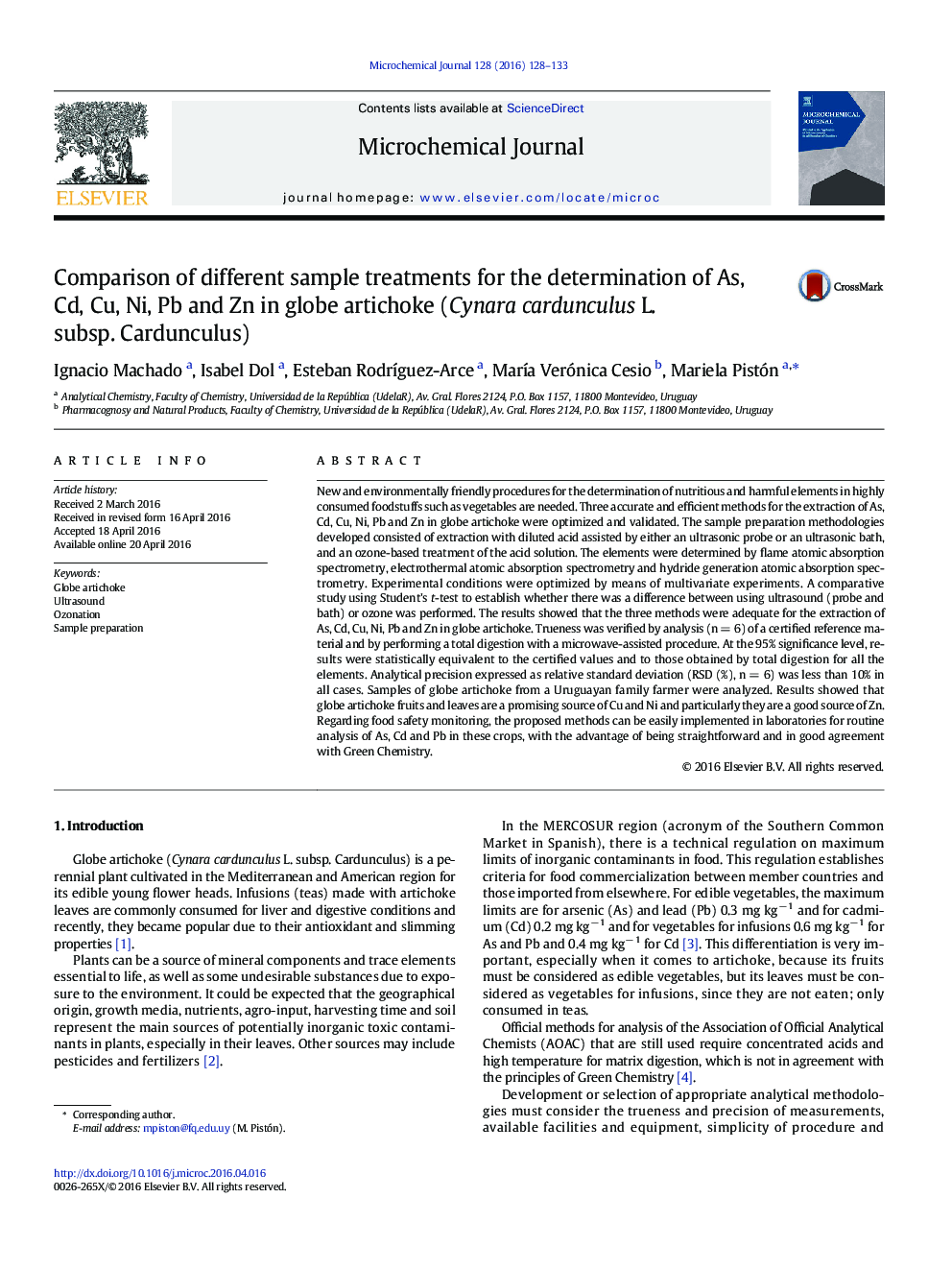| Article ID | Journal | Published Year | Pages | File Type |
|---|---|---|---|---|
| 1227551 | Microchemical Journal | 2016 | 6 Pages |
•As, Cu, Cd, Ni, Pb and Zn were determined in artichoke leaves and fruits.•Three green sample treatments were optimized and validated.•Ultrasound and ozone-based procedures were suitable for Cu, Ni and Zn determination.•Artichoke leaves and fruits are promising sources of essential trace metals.•Ultrasound and ozone-based procedures were suitable for monitoring As, Cd and Pb.
New and environmentally friendly procedures for the determination of nutritious and harmful elements in highly consumed foodstuffs such as vegetables are needed. Three accurate and efficient methods for the extraction of As, Cd, Cu, Ni, Pb and Zn in globe artichoke were optimized and validated. The sample preparation methodologies developed consisted of extraction with diluted acid assisted by either an ultrasonic probe or an ultrasonic bath, and an ozone-based treatment of the acid solution. The elements were determined by flame atomic absorption spectrometry, electrothermal atomic absorption spectrometry and hydride generation atomic absorption spectrometry. Experimental conditions were optimized by means of multivariate experiments. A comparative study using Student's t-test to establish whether there was a difference between using ultrasound (probe and bath) or ozone was performed. The results showed that the three methods were adequate for the extraction of As, Cd, Cu, Ni, Pb and Zn in globe artichoke. Trueness was verified by analysis (n = 6) of a certified reference material and by performing a total digestion with a microwave-assisted procedure. At the 95% significance level, results were statistically equivalent to the certified values and to those obtained by total digestion for all the elements. Analytical precision expressed as relative standard deviation (RSD (%), n = 6) was less than 10% in all cases. Samples of globe artichoke from a Uruguayan family farmer were analyzed. Results showed that globe artichoke fruits and leaves are a promising source of Cu and Ni and particularly they are a good source of Zn.Regarding food safety monitoring, the proposed methods can be easily implemented in laboratories for routine analysis of As, Cd and Pb in these crops, with the advantage of being straightforward and in good agreement with Green Chemistry.
